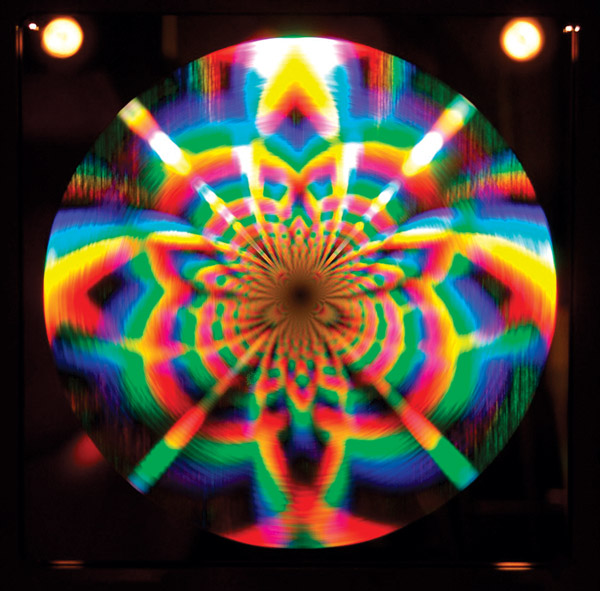Focusing light with a photon sieve
DOI: 10.1063/PT.3.1269
The ongoing quest for high-resolution space telescopes requires ever-larger optics, but their physical dimensions and weight set practical limits on what can be launched and deployed. Photon sieves offer a lighter-weight alternative. First proposed for x-ray microscopy, a photon sieve is a diffractive element based on a Fresnel zone-plate geometry, which consists of alternating concentric transparent and opaque rings. The opaque rings block the light that would otherwise destructively interfere with light passing through the transparent rings, resulting in only constructive interference at the focus. A photon sieve replaces the transparent rings with many tiny holes, configured so that light diffracting through each of them constructively interferes at a focal point downstream.
The photon sieve shown here is a prototype being developed for next-generation space telescopes by researchers at the US Air Force Academy’s physics department. Since photon sieves are flat, they can be patterned on large, lightweight polymer membranes and packaged in small spacecraft. In addition to having smaller size and mass compared with conventional reflective elements, they have significantly relaxed engineering constraints. This 20-cm-diameter sieve, lithographically patterned on chrome-coated quartz, has 2.5 billion holes ranging in size from 2 to 300 microns. Dispersion of white light from the two sources seen in the upper corners produced the colorful moiré pattern. Part of the academy’s FalconSat program, the sieve will ultimately be launched into low Earth orbit—in a spacecraft a mere 30 × 10 × 10 cm—for a solar observatory mission. (Image submitted by Geoff Andersen, USAFA; http://www.usafa.edu/df/dfe/dfer/centers/lorc/docs/FalconSAT07.pdf
To submit candidate images for Back Scatter, visit http://www.physicstoday.org/backscatter.html

Image submitted by Geoff Andersen, USAFA;


